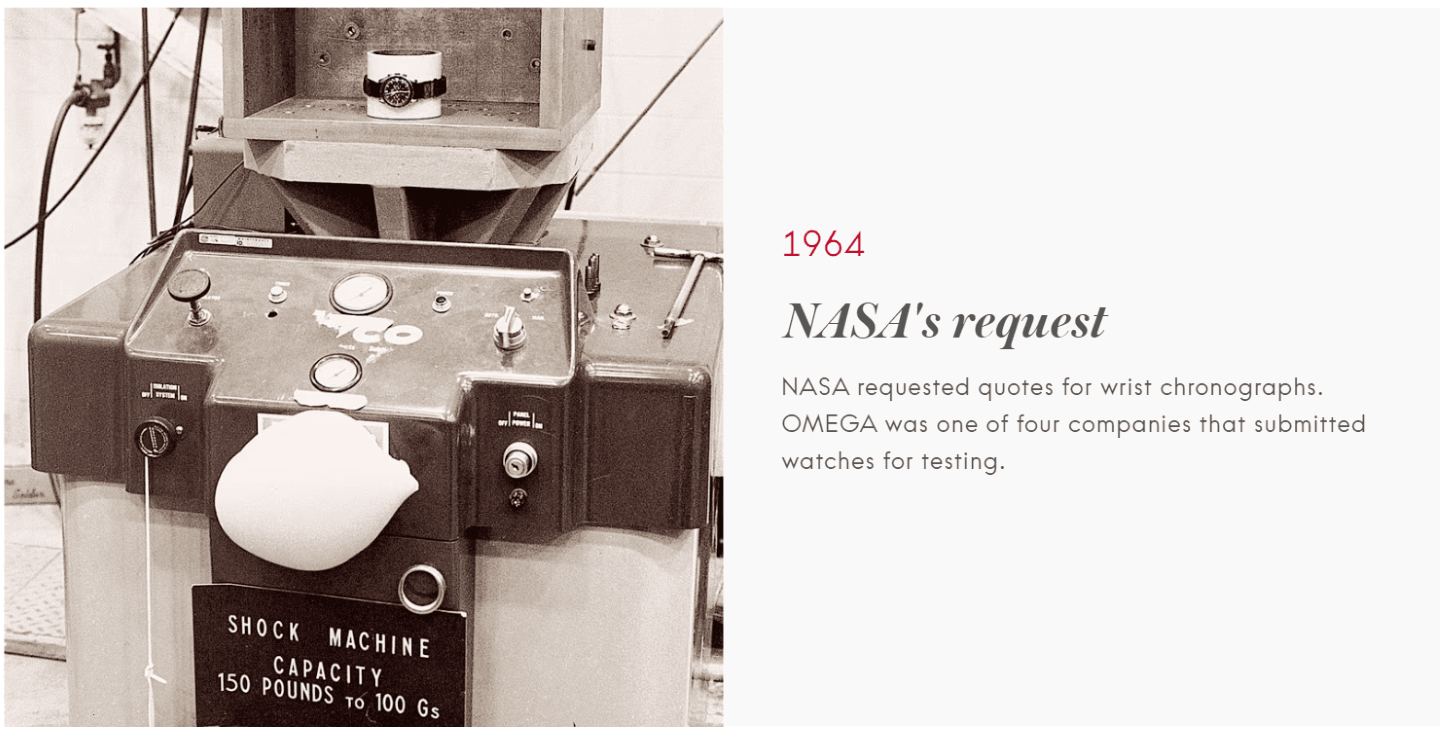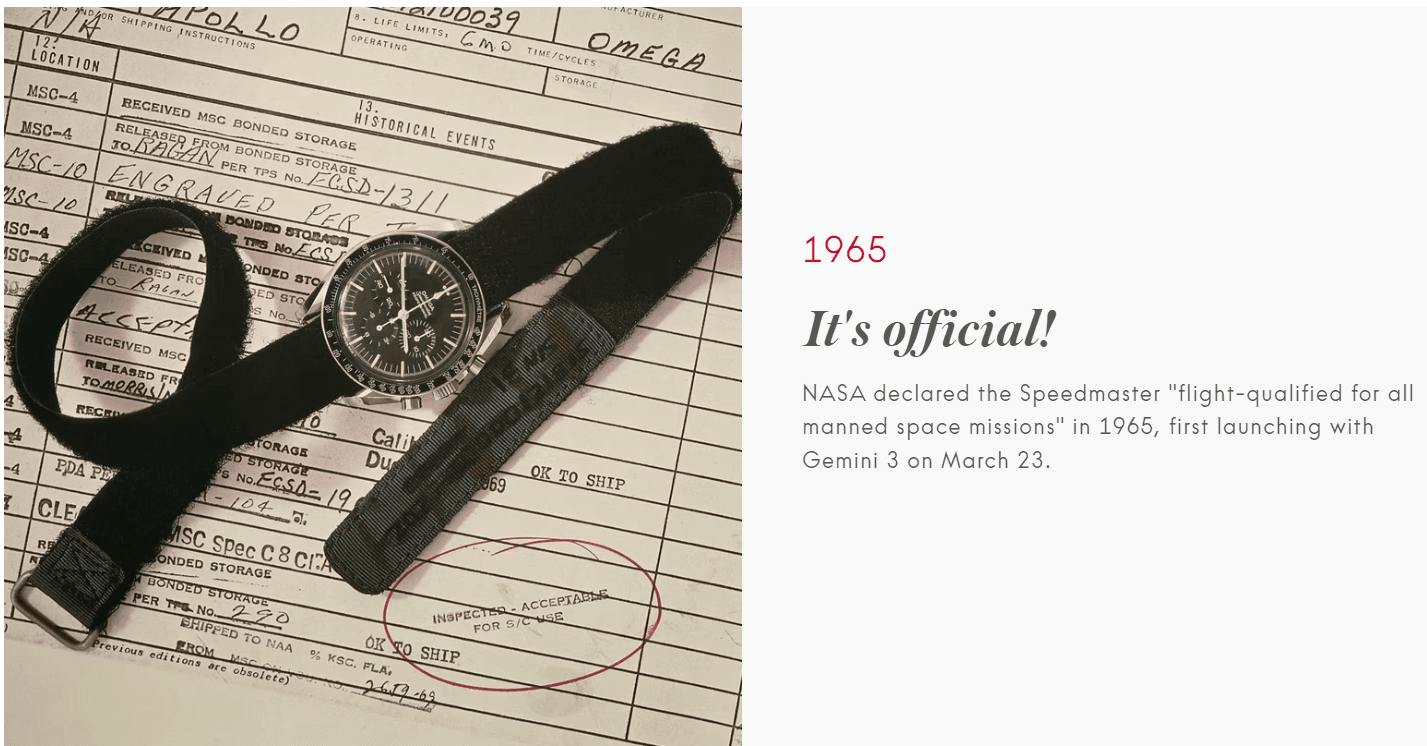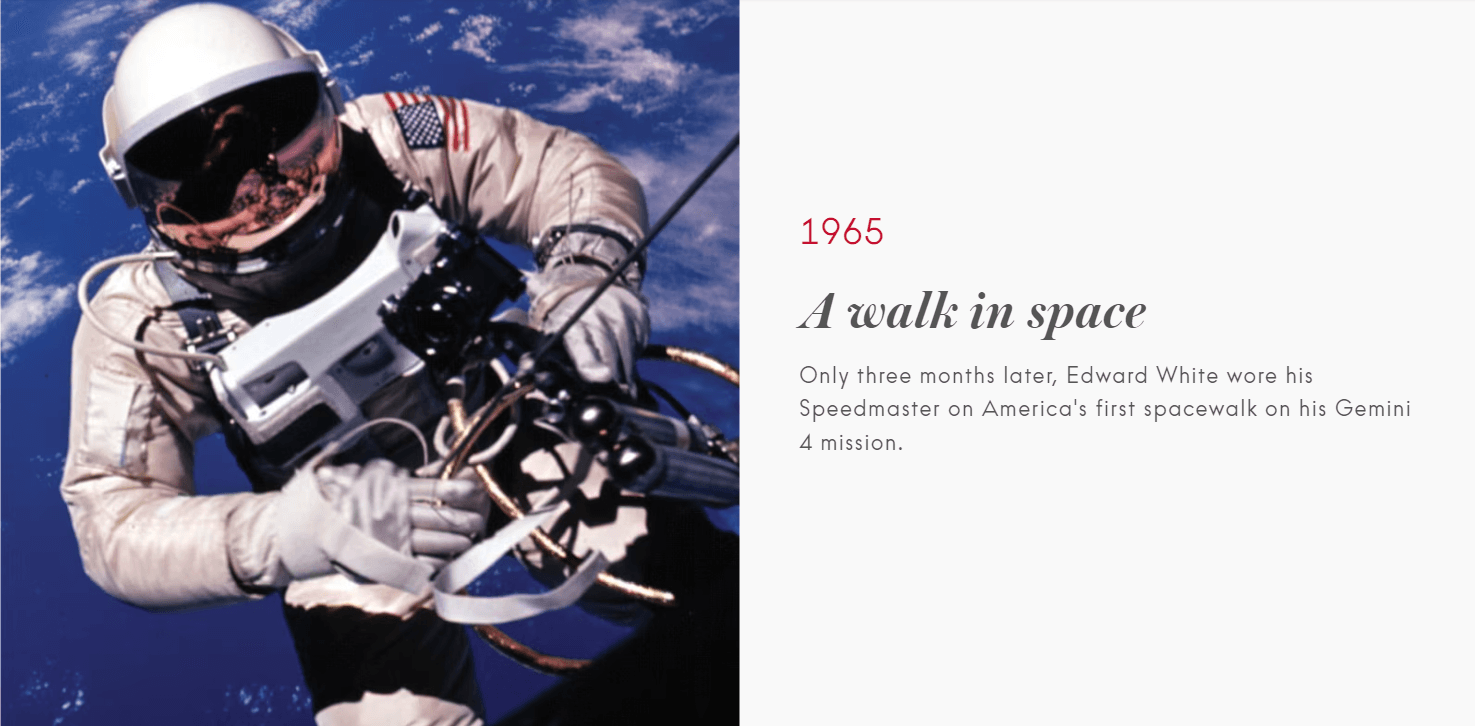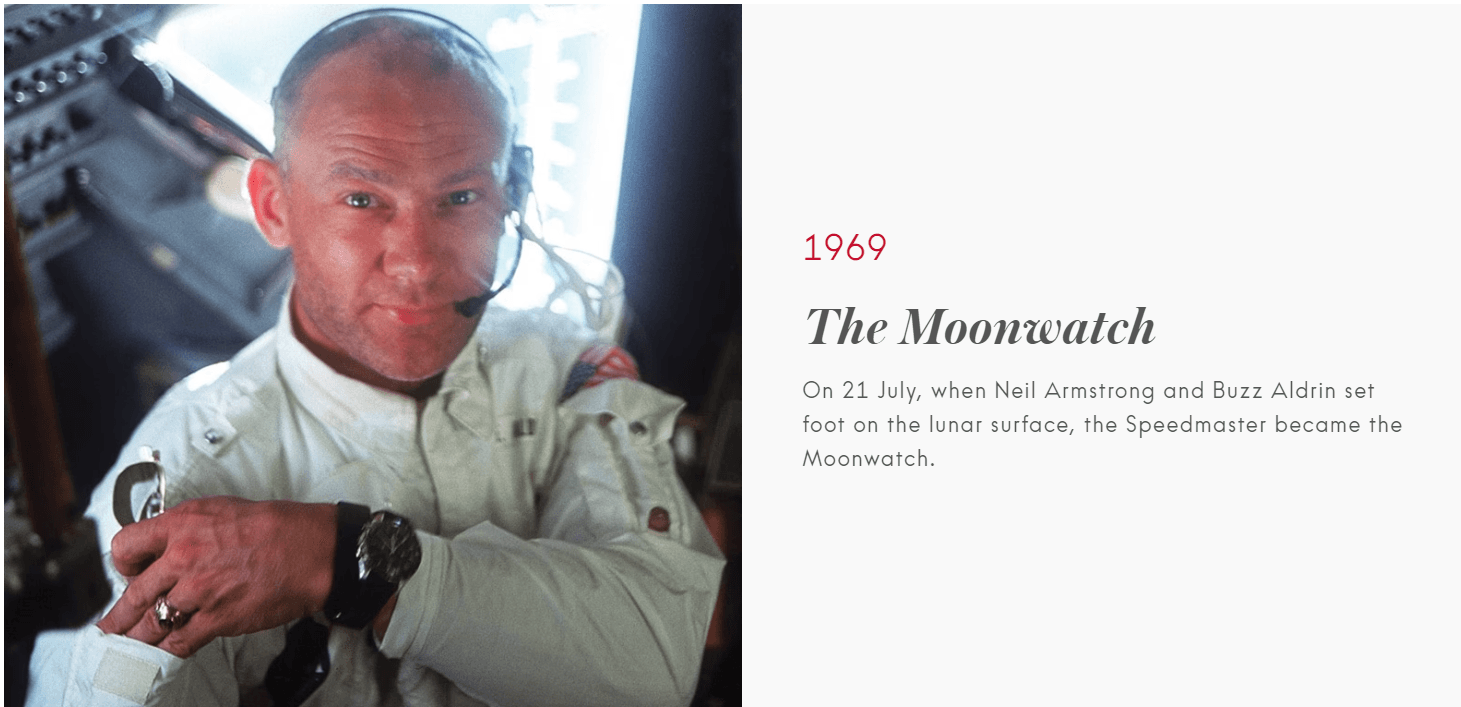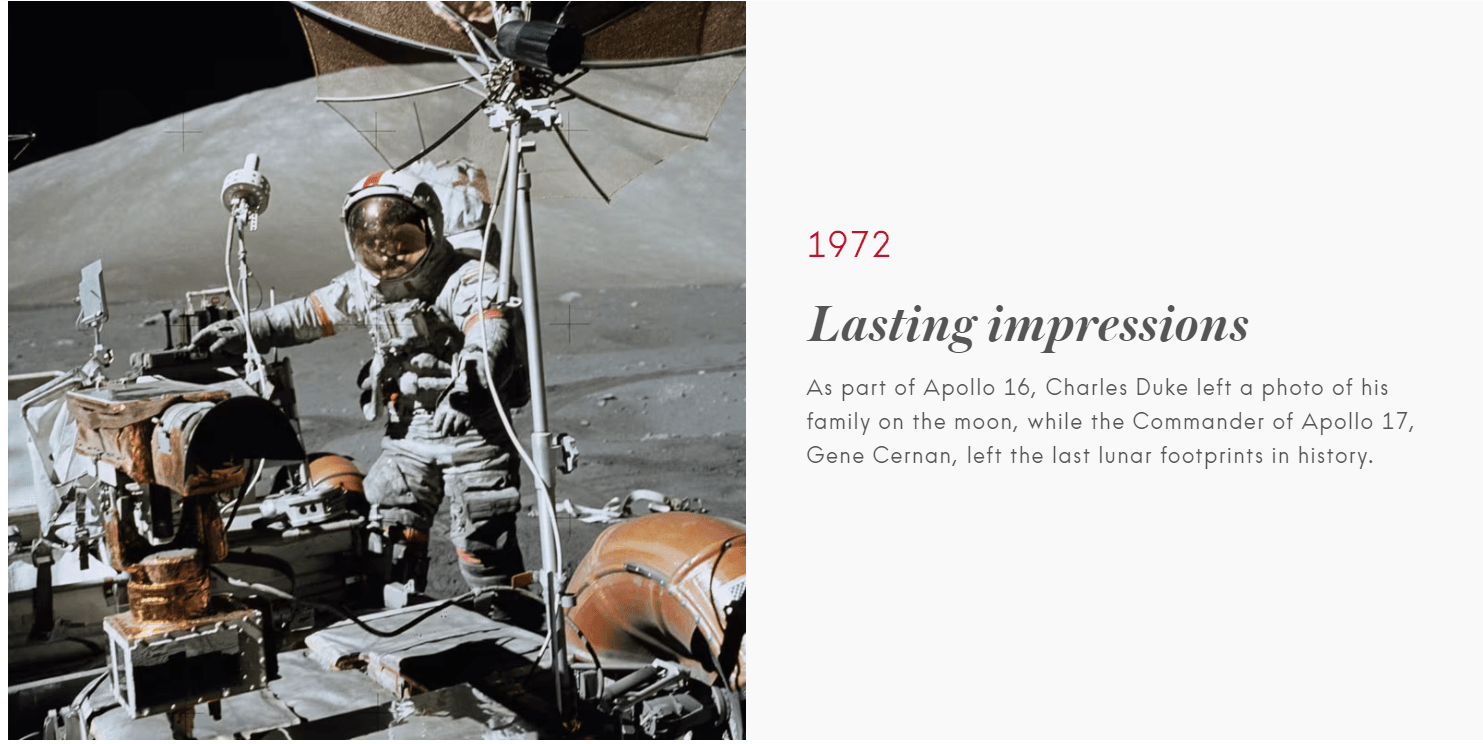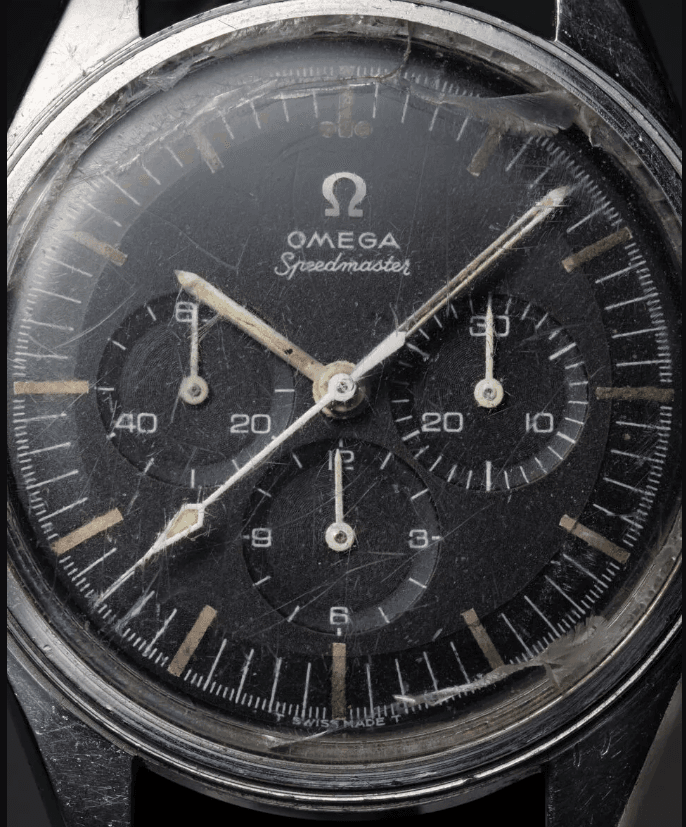Strap In: We’re Going To Space With Omega
You know Omega as the watch brand that's been to the moon and back. But did you know they’ve been pioneering watches for space since the 1960s? Omega has been on an epic quest for the final frontier, developing timepieces that can withstand the most extreme conditions in space.
Their space odyssey started in 1965 when NASA astronauts began wearing Omega Speedmasters. The "Moonwatch" passed stringent tests to prove it could function in space. In 1969, Buzz Aldrin wore his Speedmaster on the moon during the Apollo 11 mission, cementing its place in history.
In the decades since, Omega's continued innovating to push the boundaries of watchmaking technology. They've created pieces that can handle massive G-forces, extreme temperatures, and even spacewalks. Omega's space watches stand as a symbol of human achievement and their own quest for perfection.

Strap in, we're going to space.
Omega's Historic Journey to the Stars
Omega's journey to space began in 1962 when astronaut Walter Schirra wore the Speedmaster during his Mercury-Atlas 8 mission. The Speedmaster cemented its place in history in 1969 when it became the first watch worn on the lunar surface. Neil Armstrong and Buzz Aldrin were wearing Speedmasters when they took those first steps on the moon.
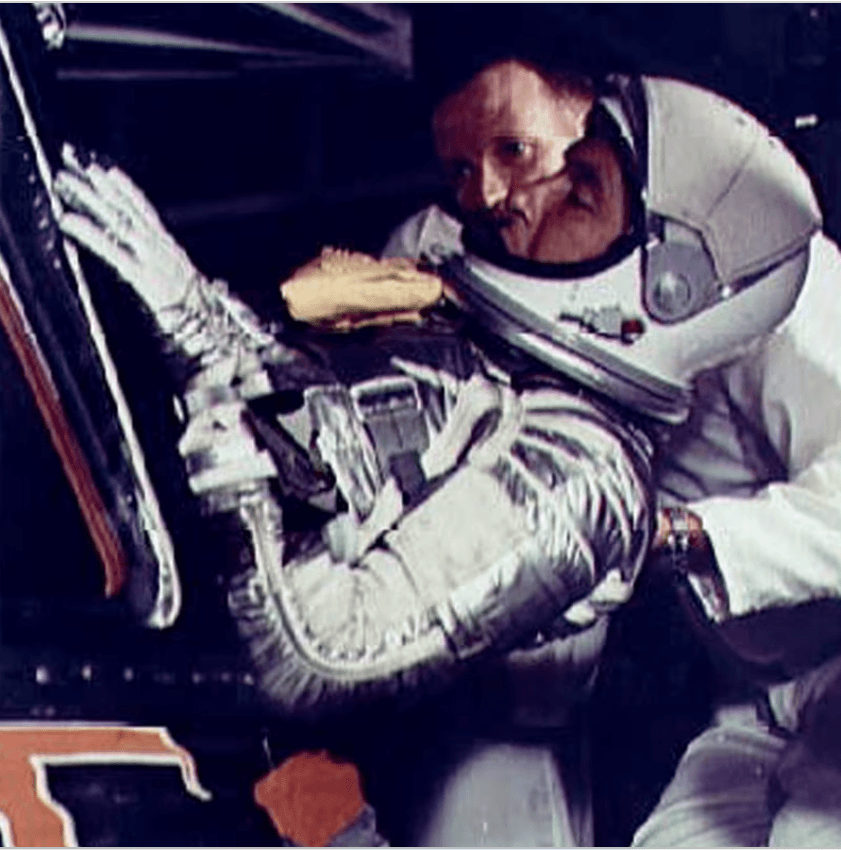
Omega's timepieces have been an integral part of space exploration ever since. The Speedmaster has been worn on all six lunar landings and has served on most lunar missions. Omega even developed a "lunar watch" version of the Speedmaster to withstand the extreme conditions of space travel and walking on the moon.
Was It The Right Choice?
What made the Speedmaster the perfect choice for space missions? For starters, it was lightweight, water-resistant, and shock-resistant. The chronograph function allowed for precise timing, essential for any space mission. Its manual wind movement meant no reliance on batteries that could fail in space. And its timeless, minimalistic design epitomized the spirit of exploration.
The astronauts of the Apollo era were staunch advocates for the Speedmaster. They formed a personal connection with their watches and many continued wearing them long after their missions. For Omega, there could be no higher endorsement of their timepieces' exceptional performance, durability and reliability.
The Speedmaster's role in space exploration solidified its status as an icon and one of the world's most famous chronographs. Its lunar legacy lives on today in Omega's modern Speedmaster models, proving some designs are truly timeless. For watch and space enthusiasts alike, the Speedmaster Professional "Moonwatch" represents the pinnacle of watchmaking's final frontier.
Pioneering Timepieces for Early Manned Space Missions
When you think of pioneering timepieces in space, Omega's Speedmaster immediately comes to mind. As the first watch worn on the moon in 1969, it earned its place in history. But Omega's quest for space actually began over a decade earlier with the Speedmaster ref. CK 2998.
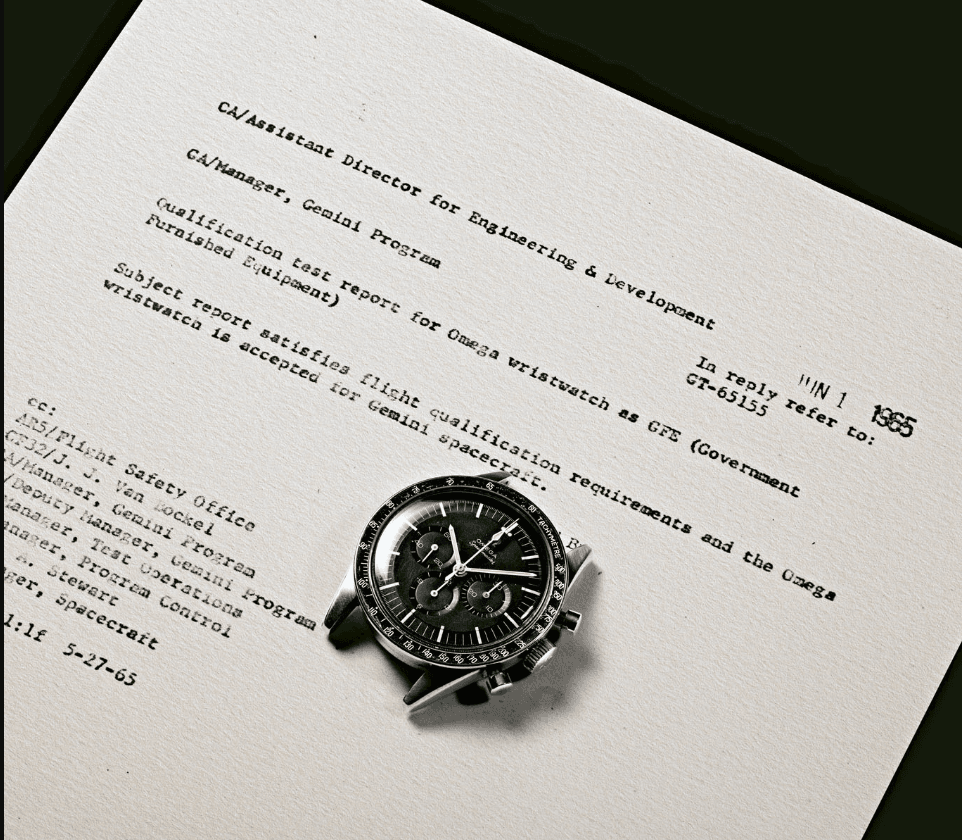
In 1962, astronaut Walter Schirra wore the CK 2998 during the Sigma 7 mission, making it the first Omega in space. Three years later, NASA began the "watch trials" to find a model that could withstand the extreme conditions of space travel and EVA. The Speedmaster prevailed, standing up to temperatures ranging from -18 to +93°C, 40 Gs of acceleration, and eight days of vibration testing.
Qualified for All Manned Space Missions
In 1965, the Speedmaster became the first watch qualified by NASA for all manned space missions. It accompanied astronauts on the Gemini and Apollo programs, including the historic Apollo 11 moon landing. Neil Armstrong was wearing his Speedmaster when he took that "giant leap for mankind".
Omega's timepieces have gone on to circle the Earth, traverse the lunar surface, and travel to space stations. They've been a faithful companion, providing critical timing and navigation functions for astronauts exploring the unknown. The brand's dedication to space-worthy watches and passion for pushing the boundaries of watchmaking have well earned them a place in the final frontier. Their timeless, iconic Speedmaster will forever represent mankind's eternal quest for discovery.
The original Moonwatch had a black dial, white markers, and steel case. It housed the manual-wind caliber 321 movement. This legendary movement was the heart of the Speedmaster for over 20 years. Over time, Omega introduced new Speedmaster models to keep up with changing technology and tastes. The Mark Il arrived in 1969, the Mark III in 1971, and the Mark IV in 1973. While similar in style to the Moonwatch, these models had different movements and specifications.
In 1984, Omega launched the Speedmaster "Moonwatch" Mark V. It featured a new automatic movement but retained the iconic black dial and steel case of the original Moonwatch. This model established the standard for all future "Moonwatch" models.
Today, the Speedmaster Professional "Moonwatch", aka the "Moonwatch", remains true to 1965 original. It's a tribute to Omega's pioneering role in space exploration and an icon of watchmaking history. After over 50 years, it still has the power to make watch lovers' hearts race.
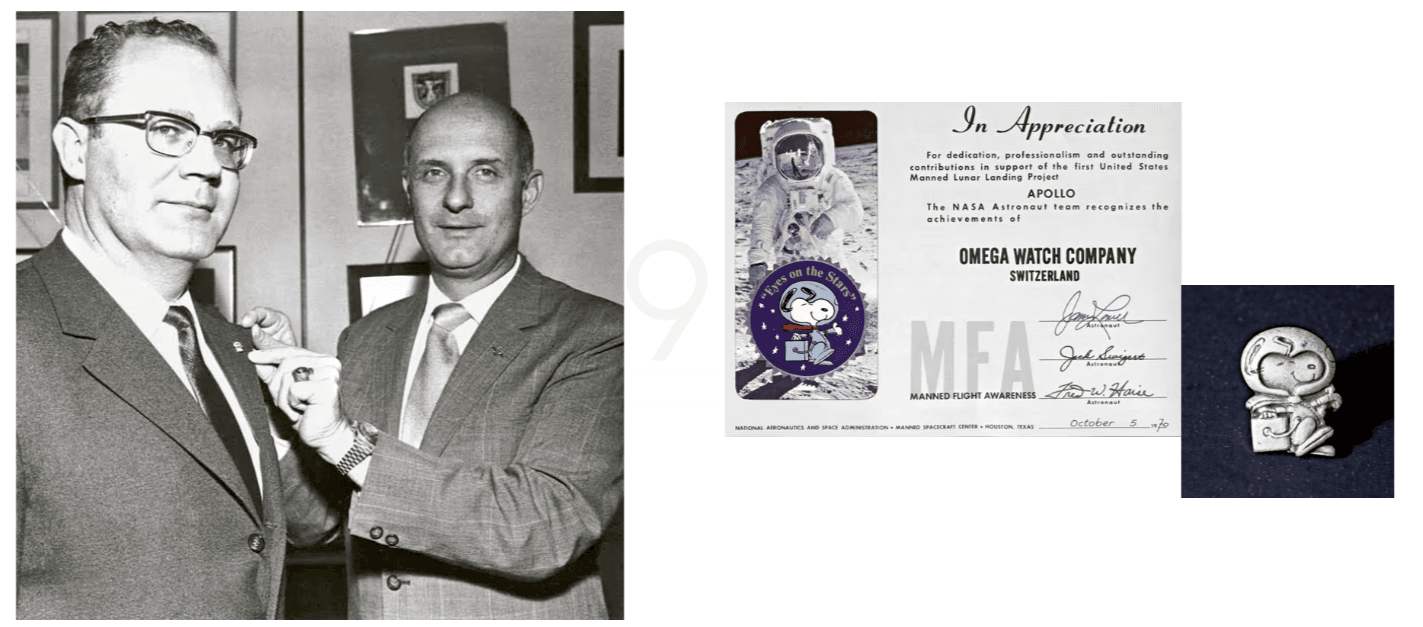
Testing Omega Watches in Zero Gravity
Omega has tested its watches in the harshest conditions imaginable, including the zero-gravity environment of space. In 1992, Omega sent an Omega Speedmaster X-33 watch aboard the Russian space station Mir to evaluate how the watch would perform in microgravity conditions for an extended period of time.
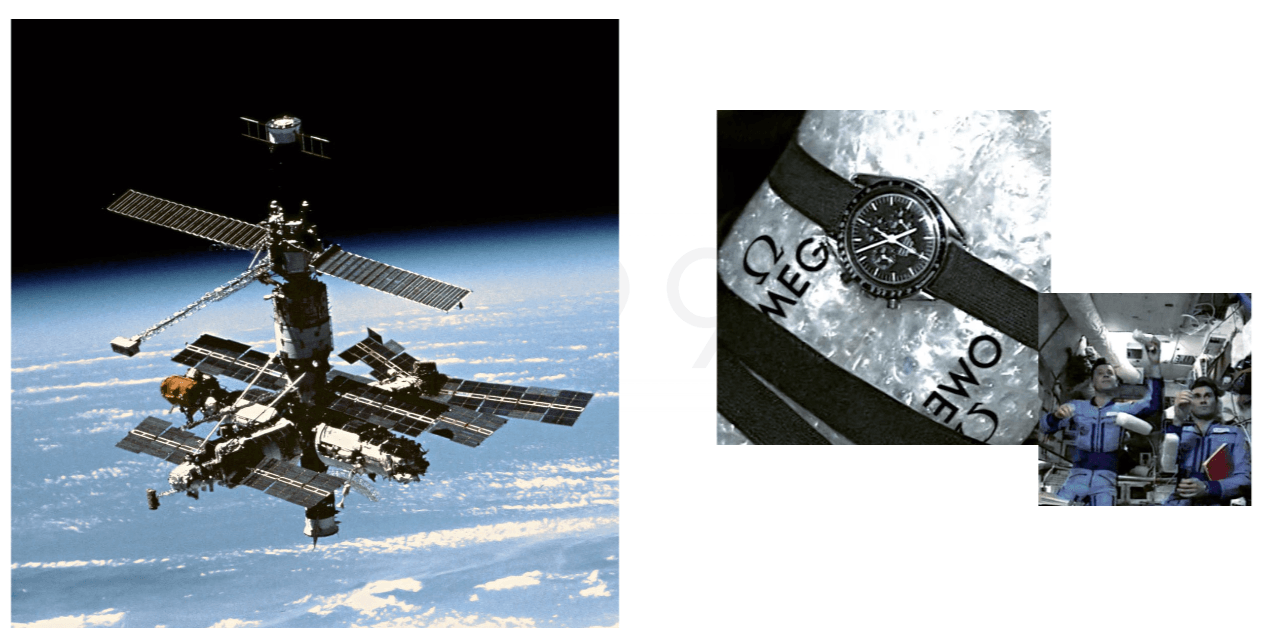
The Omega watch spent 365 days in space, orbiting Earth over 16,000 times. Engineers closely monitored the watch to see how components like the quartz movement and LCD display would function without the effects of Earth's gravity. Amazingly, the watch showed only minor deviations and continued to operate as intended, proving Omega's spaceworthiness.
Astronauts have also performed impromptu "repairs" to their Omega watches while in space. In 2002, astronaut Don Pettit's Omega Speedmaster needed a new battery after 5 years of flawless service aboard the International Space Station (ISS). Pettit, an avid tinkerer, didn't want to have to send the watch back to Earth. Instead, he obtained a new battery from the ISS's supply of equipment and installed it himself during a spacewalk 260 miles above Earth. For the watch to be serviced in the harsh conditions of space travel highlights why Omega remains the only watch approved for use in spacewalks and extra-vehicular activity (EVA) by NASA.
Through rigorous testing on Earth and improvisation in space, Omega has proven time and again that its watches can withstand the most extreme environments. Their timepieces aren't just meant for telling time on Earth - they're built for discovering time across the universe. The final frontier of watchmaking is Omega's quest for space.
The Future of Space Watches
The future of space watches is an exciting frontier. Omega has been innovating for over 50 years to produce timepieces that can withstand the harsh conditions of space travel and exploration. Their latest offering, the Omega Speedmaster Professional "X-33," is a cutting-edge quartz watch designed with the European Space Agency to meet the needs of today's space missions.

With its lightweight titanium case, the X-33 can handle high g-forces during launch and re-entry. Its analog-digital display provides critical information for spacewalks like mission elapsed time, a countdown timer, and multiple alarms. The X-33 is a highly technical tool watch optimized for professional use. For enthusiasts, it represents the pinnacle of space watch engineering and Omega's mastery in this field.
For the next giant leap in space exploration, Omega is already preparing. They have collaborated with ESA on conceptual designs for a next-generation space watch. New models may feature an ultra-durable case and crystal made of new metallurgic alloys, smarter interfaces that can be controlled by an astronaut's space suit, and connectivity to provide mission data in real time.
While the realities of space travel today are far from the science fiction of generations past, watches remain an essential part of any mission. The challenges of operating in microgravity and hazardous environments drive constant innovation.
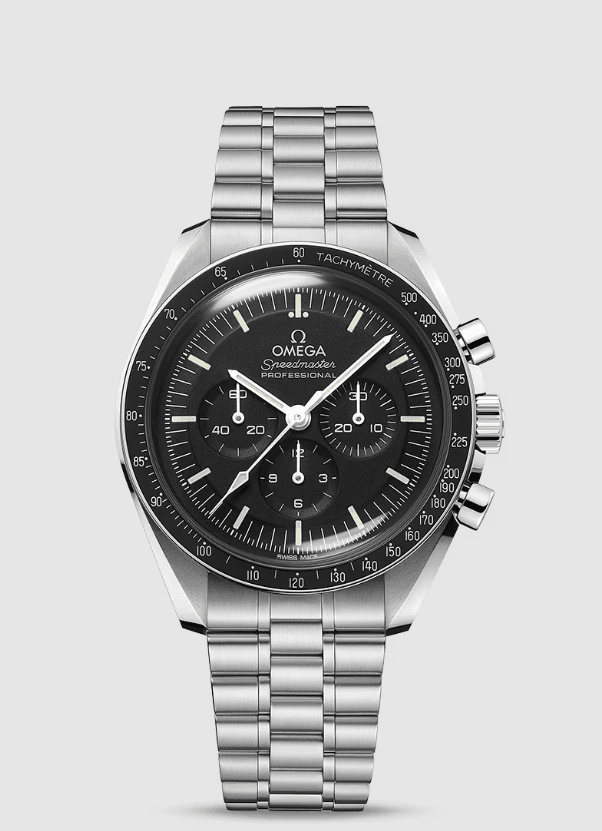
Orbis International and Privateer Mission
Orbis International and its Flying Eye Hospital have been making a difference in preventable blindness for decades. Their mission is to train eye care professionals in developing countries and provide sight-saving surgeries to those in need.
Since 1982, Orbis has been taking the fight against avoidable blindness to the skies. Their iconic Flying Eye Hospital is a fully equipped mobile teaching hospital on board a plane. It travels to some of the most remote places in the world to train local doctors, nurses and community eye health workers. They get hands-on experience learning from some of the leading ophthalmologists.
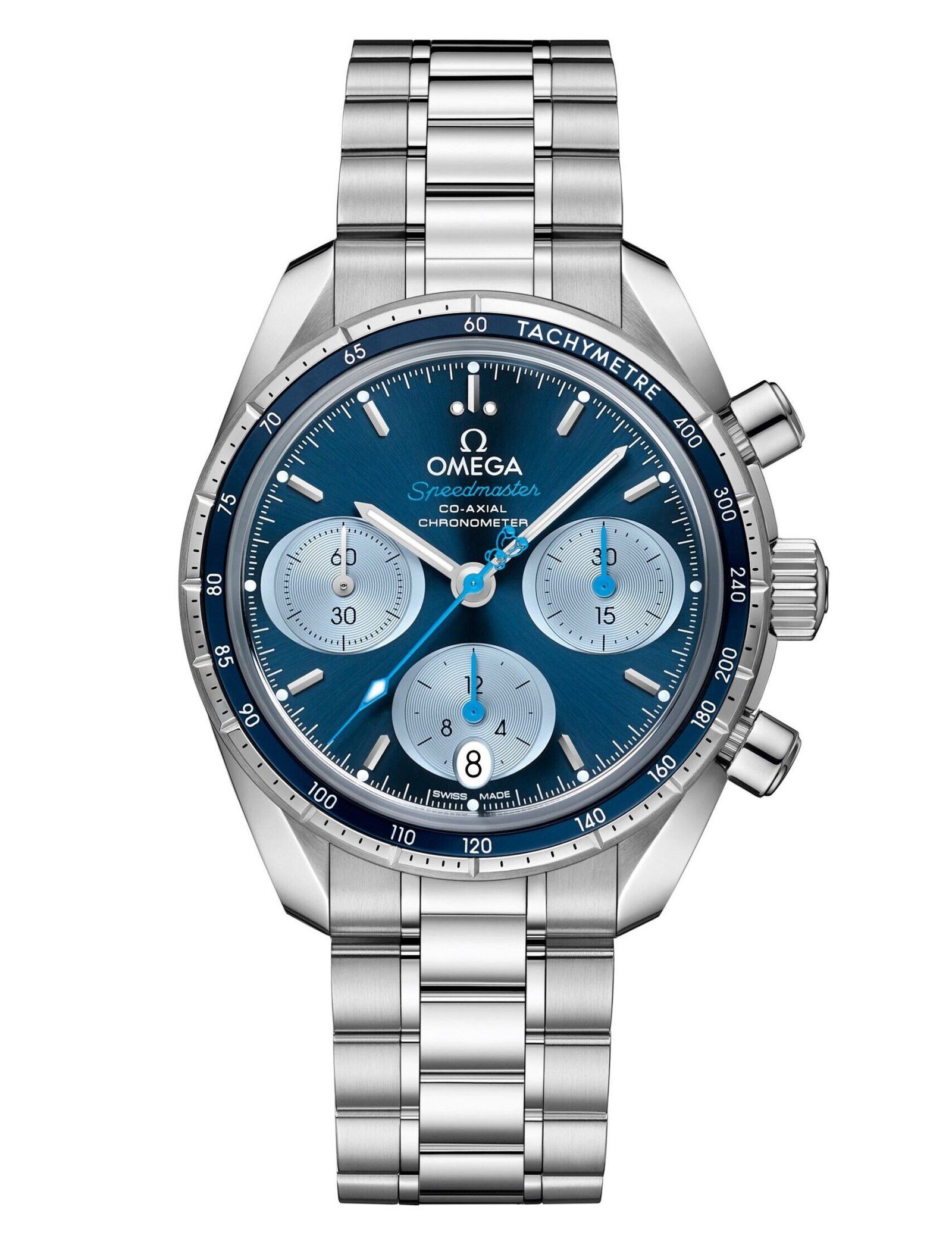
Once training is complete, the medical staff works together with the local teams to provide eye surgeries and treatments for patients in need. Cataract surgeries, glaucoma treatments, and other sight-saving procedures are performed. Those suffering from conditions like pterygium, diabetic retinopathy, or corneal ulcers finally get the care they need.
Over the years, Orbis has built long-term partnerships with hospitals and health organizations in over 90 countries. They help strengthen entire eye care systems from training and infrastructure to accessibility of treatment. Millions of lives have been changed through their comprehensive and customized programs.
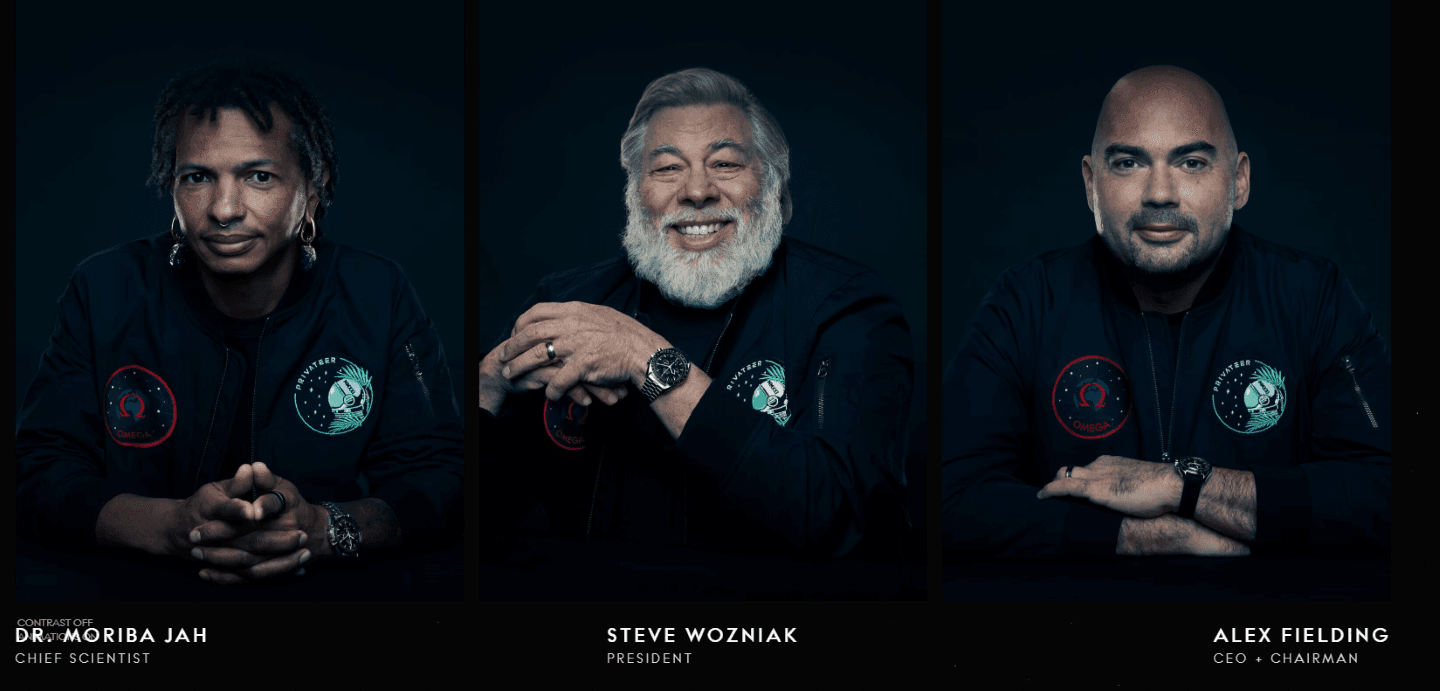
Their mission of fighting avoidable blindness and saving sight is an ongoing one. Orbis continues to push the frontiers in ophthalmic knowledge, telemedicine, and virtual reality surgical simulation. They are ensuring high-quality eye care is available to some of the most isolated and underserved populations on the planet. Through dedication and innovation, Orbis brings the miracle of sight to those in greatest need around the world.
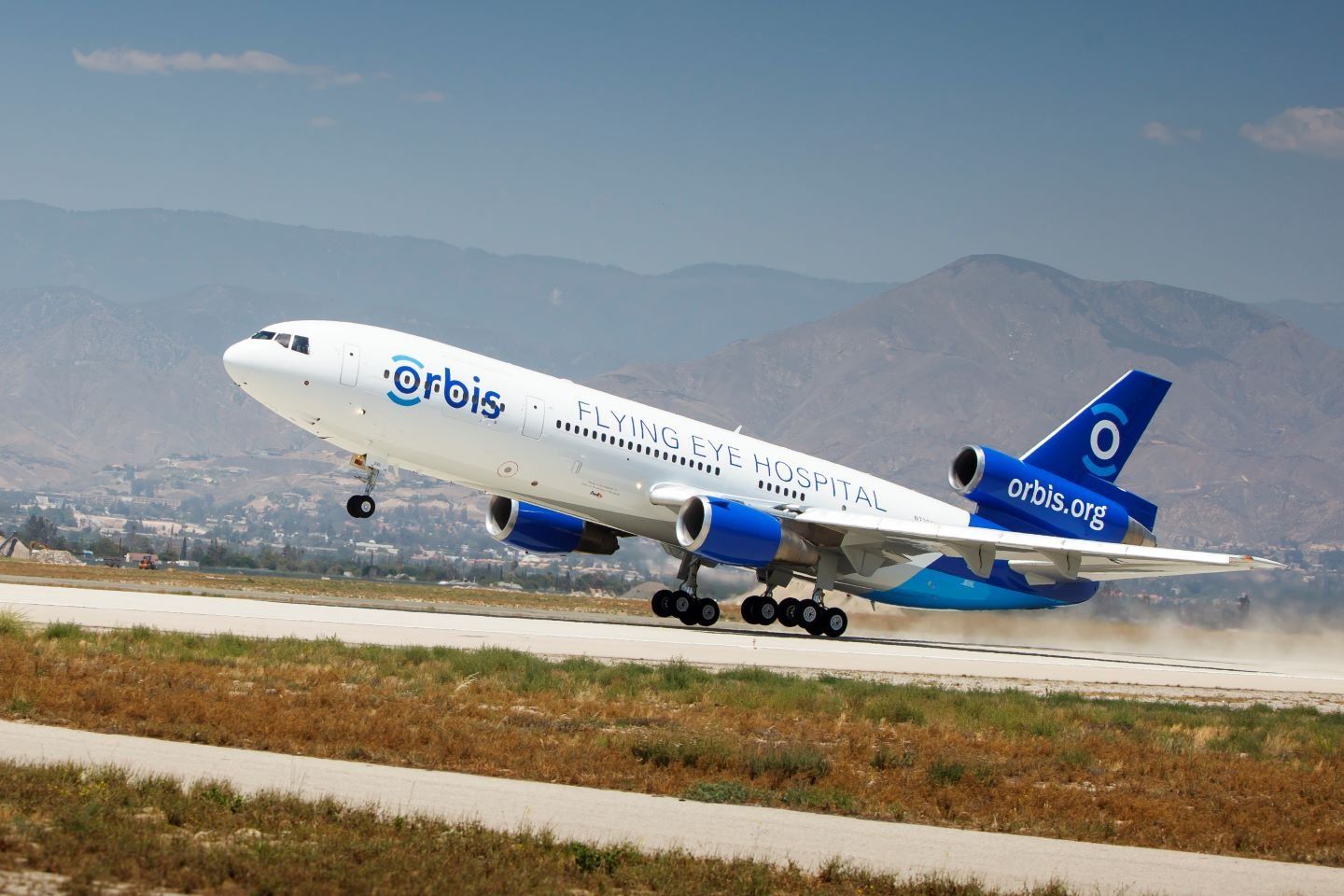
While only a few human wrists have donned those storied Omega Speedmasters in space, their place in history is eternal. For the rest of us stuck on terra firma, an Omega space watch lets us connect to that spirit of exploration and feel like we've touched the stars. If space really is the final frontier, then Omega has staked its claim and planted its flag as the watch brand that helped humanity take those first giant leaps. The future is unwritten, but one thing's for sure - Omega will be there, timing each moment as we reach out once more to touch the sky.
No articles found


